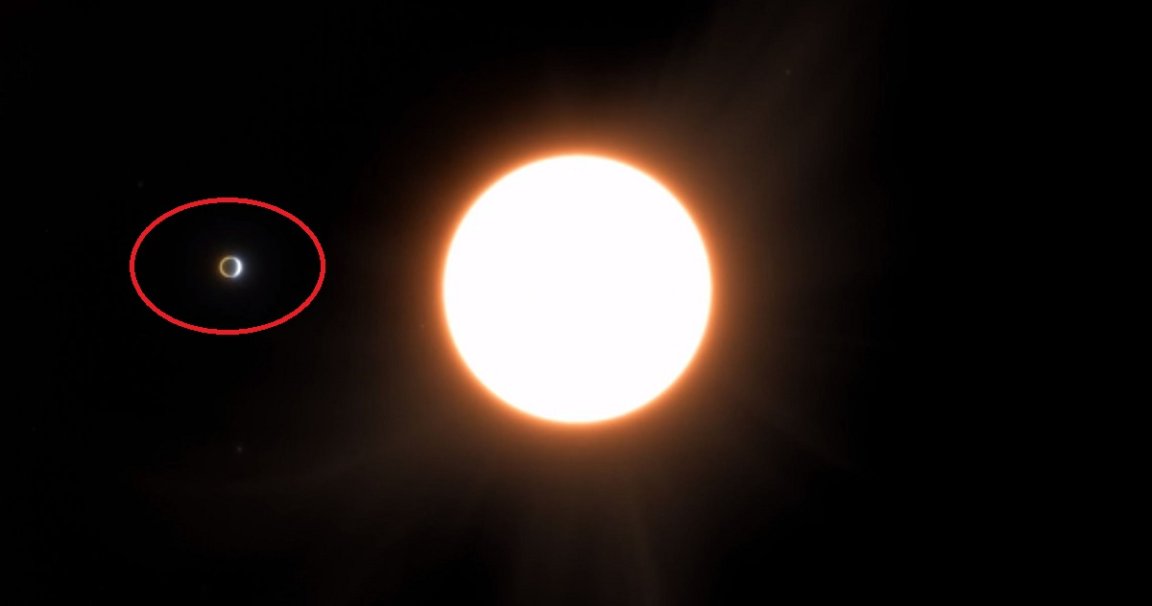
A team of European scientists say they’ve figured out why a gleaming exoplanet is so ridiculously shiny. And according to their recently-published paper, it’s got a little something to do with the “ultra-hot” planet’s extremely metal — literally and figuratively — titanium clouds.
The exoplanet in question, unceremoniously dubbed LTT9779 b, orbits a star more than 260 light-years from Earth and boasts the highest albedo — basically, the fraction of light reflected back into space — of any planet yet discovered in our galaxy. For context, Earth’s albedo sits at about 30 percent, while Venus, the planet in our own solar system with the highest figure, sits at about 75 percent. LTT9779 b’s albedo tops even that at 80.
So, in other words, it’s very shiny — an observation that’s baffled scientists, given the world’s size and proximity to its star. It’s roughly the size of the mid-sized planet Neptune, and as it performs a full orbit every 19 hours, it’s extremely close to its home star. Usually, as Ars Technica notes, only very small, rocky, or very large, gaseous planets are found so close to their stars.
It’s so close, in fact, that according to Ars its surface temperature sits somewhere around 2,000 degrees Celsius. At that temperature and proximity, scientists wouldn’t usually expect a planet to have much of an atmosphere at all, let alone one that shines the way that this one does.
“It’s a planet that shouldn’t exist,” Vivien Parmentier, a researcher at the Observatory of Côte d’Azur and co-author of the study, published last week in the journal Astronomy & Astrophysics, said in a statement. “We expect planets like this to have their atmosphere blown away by their star, leaving behind bare rock.”
To explain the planet’s shine, the researchers examined data from the European Space Agency’s CHaracterising ExOPlanet Satellite (CHEOPS), a second-gen exoplanet-tracking satellite. CHEOPS tracked the planet as it moved behind its home star — also known as a secondary eclipse — ten different times, allowing the scientists to more precisely measure the planet’s brightness.
With those observations in hand, they were able to develop a theory that explains the planet’s gleam: glass and metal clouds, which serve as a protective planetary mirror.
“The clouds reflect light and stop the planet from getting too hot and evaporating,” Sergio Hoyer, the study’s lead author and a researcher at the Marseille Astrophysics Laboratory, said in a statement. “Meanwhile, being highly metallic makes the planet and its atmosphere heavy and harder to blow away.”
“It was really a puzzle, until we realized we should think about this cloud formation in the same way as condensation forming in a bathroom after a hot shower,” said Parmentier. “To steam up a bathroom you can either cool the air until water vapor condenses, or you can keep the hot water running until clouds form because the air is so saturated with vapor that it simply can’t hold any more.”
“Similarly,” he added, “LTT9779 b can form metallic clouds despite being so hot because the atmosphere is oversaturated with silicate and metal vapors.”
In other words, the LTT9779 b’s atmosphere is so overloaded with glass silicate and metal that those particles are trapped in a hellish, titanium-laced version of the Earth’s water cycle, continuously condensing and raining down on the nightmarishly hot planet.
“Imagine a burning world, close to its star, with heavy clouds of metals floating aloft, raining down titanium droplets,” study co-author James Jenkins, an astronomer at Diego Portales University in Santiago, Chile, said in a statement.
Hopefully, the James Webb Space Telescope will soon focus its mighty eye on LTT9779 b, so scientists can learn even more about this strange world. In the meantime, though, given the titanium rain and 2,000-degree Celsius surface temperature of it all, we wouldn’t recommend building a summer home there.
More on exoplanets: James Webb Telescope Detects Mysterious Water Vapor Around Alien Planet